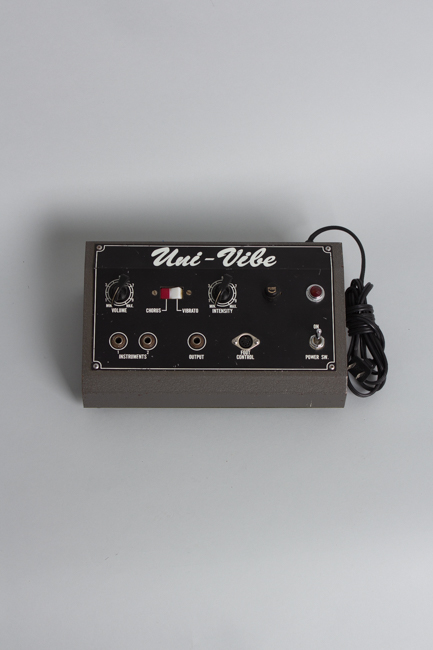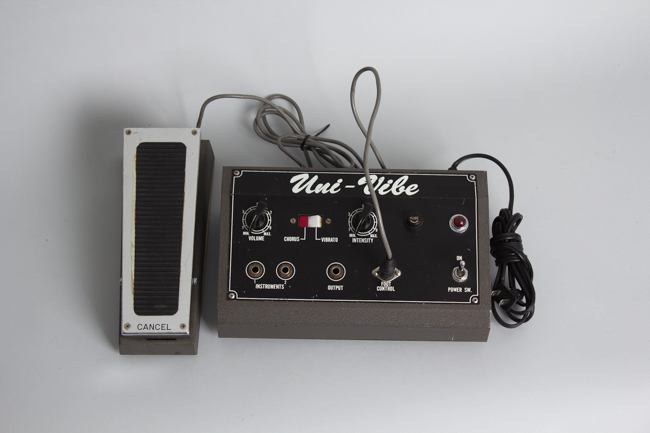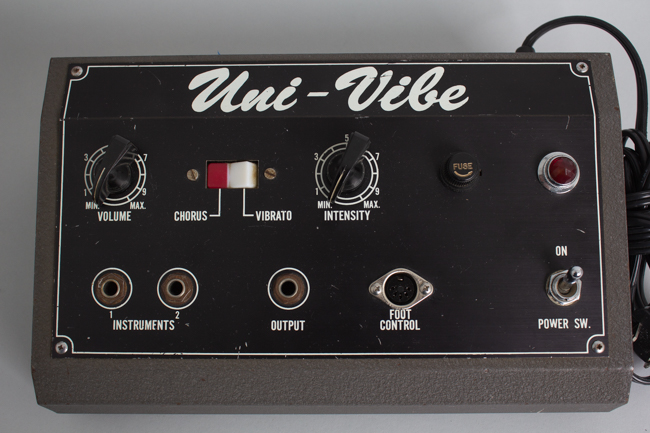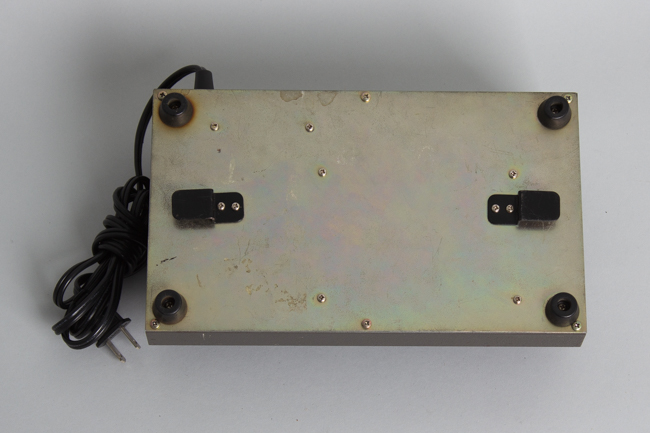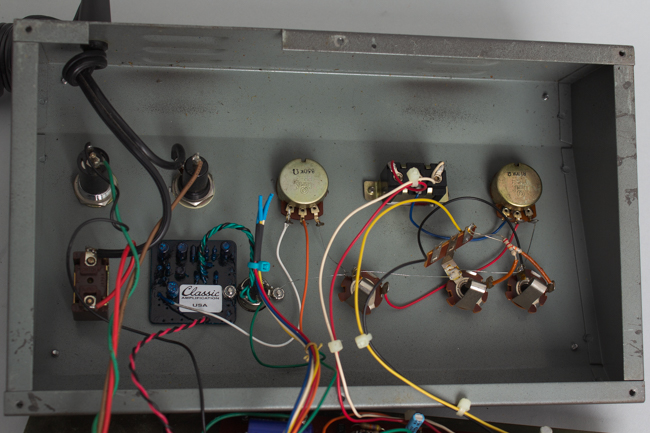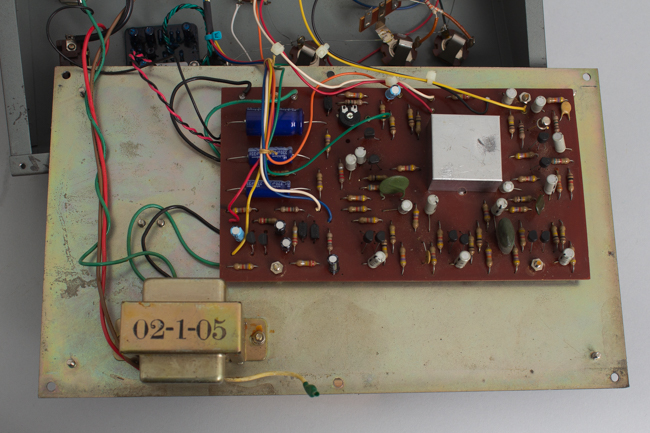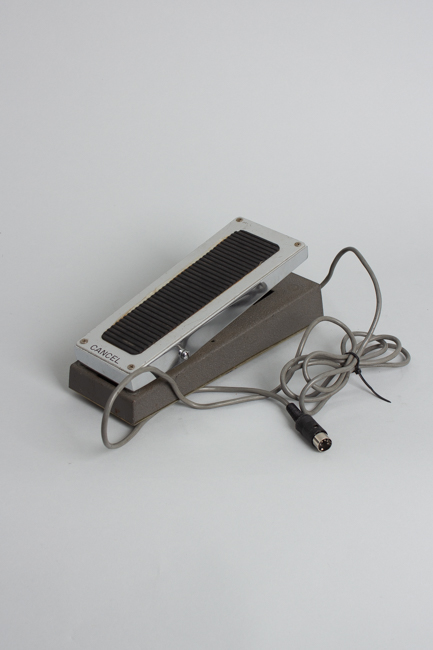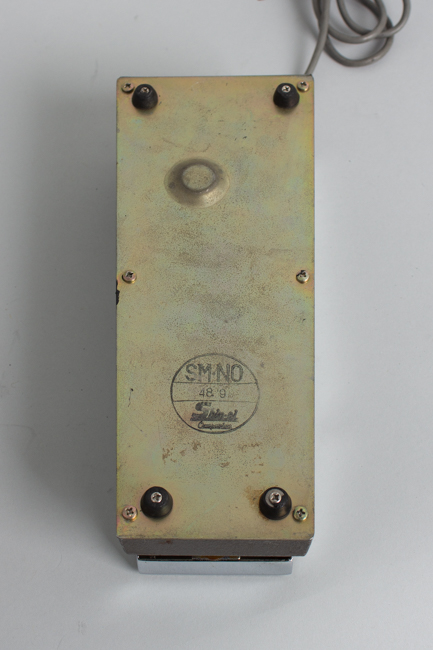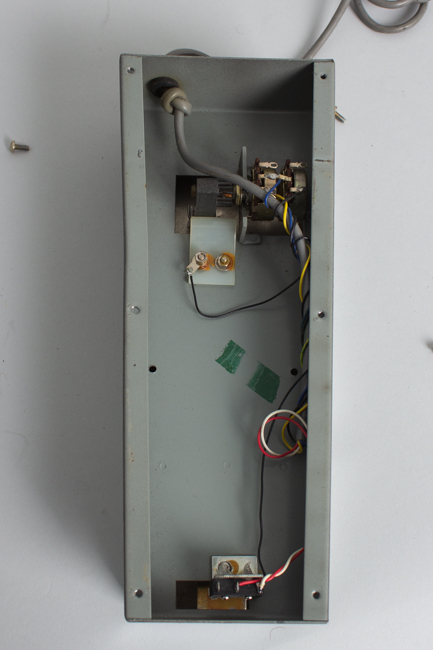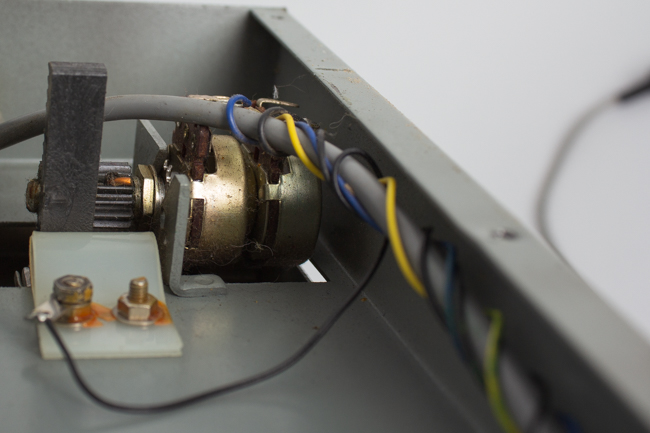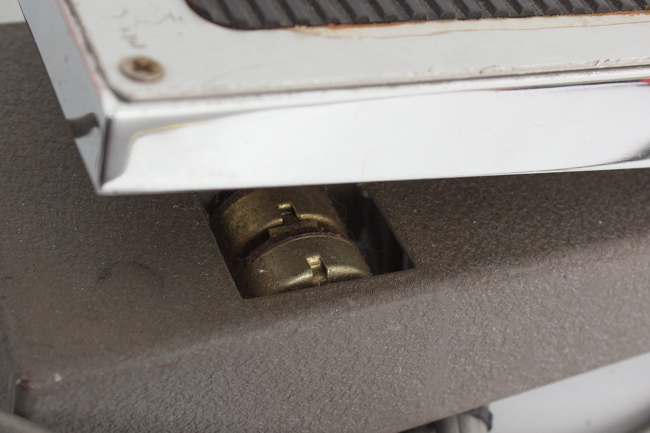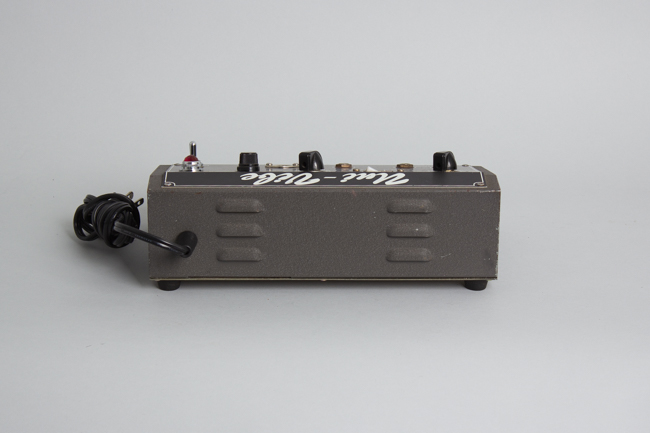Shin-ei Uni-Vibe Vibrato Tremolo Effect (1973)
Shin-ei Uni-Vibe Vibrato Model Tremolo Effect (1973), made in Japan, grey finish, aluminum. Few effect units have cemented as much of a place in the history of the electric guitar as Japan's Shin-ei Uni-Vibe. Fumio Mieda developed the Uni-Vibe attempting to achieve the entrancing doppler-y warbles of the radio he'd listen to at night, originally having it produced under the Honey brand who also interpolated a similar circuit into several other notable offerings such as the psychedelic machine. The Uni-Vibe found its way into international catalogues under a few names as was par for the course for many Japanese musical equipment manufacturers, such as Univox, but found notority and the most success as itself (as it would later be adopted by some of the world's preeminent rock stars).
At its core, the 'Vibe is an early phaser/phase shifter operating off a nearly magical seeming mechanism: 4 photocells surround a pulsating lightbulb controlling the effect. The Uni-Vibe sold today by its current owner Dunlop does not necessarily bear any technical resemblance to the real thing as it lacks the photocell and bulb circuit native to the original and which, like many time-based and modulation effects of a certain age, cannot live forever. This white logo example comes a few years into production with a bit of functional repair reflective of the mortality of these much-desired machines. The hypnotic tones of the Uni-Vibe are best heard used by two greatest-of-all-time contenders, Jimi Hendrix and David Gilmour, who used the effect extensively at Woodstock and on Dark Side of the Moon respectively.
Height is 6 1/4 in. (15.9 cm.), 10 5/8 in. (27 cm.) width, and 3 1/2 in. (8.9 cm.) high.
This Uni-Vibe is pleasure to behold cosmetically and a pleasure to play, having been expertly serviced by Classic Amplification who appears to be something of a Uni-Vibe laureate. Judging from their website where they've documented dozens of other original Uni-Vibe repairs, it appears this gently used example still contracted what Classic Amplification calls "funky circuit board disease," in reference to a weak or failing LFO that comes with age even if not with heavy use. Inside the pedal, held with adhesive to the inside of the chassis, is a carefully grafted proprietary auxiliary LFO serving as a reconstruction of the dying original components. The result is one of the clearest, lushest examples of this iconic effect that we have heard while remaining entirely faithful to the original character of the Uni-Vibe.
The unit bears some other standard marks of service, including a replaced (but still ungrounded, 2-prong) cable and a standard recapping for health and longevity. Upon close inspection it seems the power switch and gem may have been replaced with a reproduction during servicing. That said, the remaining original bits of hardware on this Uni-Vibe are quite clean and minimally tarnished, so it would be a challenge to tell this slightly more modern looking bit apart from the other shiny chrome. The foot control pedal remains entirely original and functional, dated 1973 according to Shin-ei's Japanese Showa date code. Overall Excellent - Condition.
At its core, the 'Vibe is an early phaser/phase shifter operating off a nearly magical seeming mechanism: 4 photocells surround a pulsating lightbulb controlling the effect. The Uni-Vibe sold today by its current owner Dunlop does not necessarily bear any technical resemblance to the real thing as it lacks the photocell and bulb circuit native to the original and which, like many time-based and modulation effects of a certain age, cannot live forever. This white logo example comes a few years into production with a bit of functional repair reflective of the mortality of these much-desired machines. The hypnotic tones of the Uni-Vibe are best heard used by two greatest-of-all-time contenders, Jimi Hendrix and David Gilmour, who used the effect extensively at Woodstock and on Dark Side of the Moon respectively.
Height is 6 1/4 in. (15.9 cm.), 10 5/8 in. (27 cm.) width, and 3 1/2 in. (8.9 cm.) high.
This Uni-Vibe is pleasure to behold cosmetically and a pleasure to play, having been expertly serviced by Classic Amplification who appears to be something of a Uni-Vibe laureate. Judging from their website where they've documented dozens of other original Uni-Vibe repairs, it appears this gently used example still contracted what Classic Amplification calls "funky circuit board disease," in reference to a weak or failing LFO that comes with age even if not with heavy use. Inside the pedal, held with adhesive to the inside of the chassis, is a carefully grafted proprietary auxiliary LFO serving as a reconstruction of the dying original components. The result is one of the clearest, lushest examples of this iconic effect that we have heard while remaining entirely faithful to the original character of the Uni-Vibe.
The unit bears some other standard marks of service, including a replaced (but still ungrounded, 2-prong) cable and a standard recapping for health and longevity. Upon close inspection it seems the power switch and gem may have been replaced with a reproduction during servicing. That said, the remaining original bits of hardware on this Uni-Vibe are quite clean and minimally tarnished, so it would be a challenge to tell this slightly more modern looking bit apart from the other shiny chrome. The foot control pedal remains entirely original and functional, dated 1973 according to Shin-ei's Japanese Showa date code. Overall Excellent - Condition.
